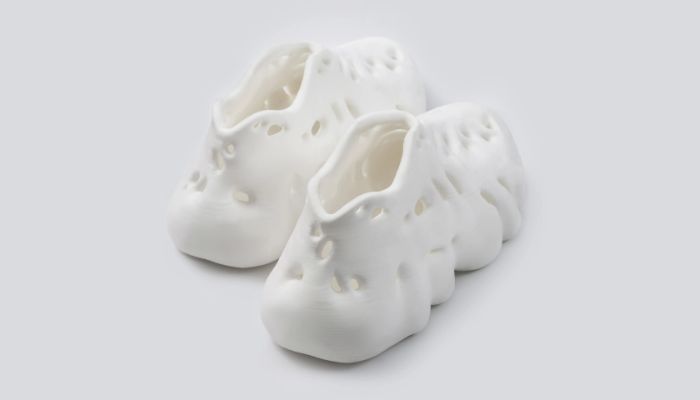
It is only relatively recently that footwear produced using additive manufacturing has become available. Though the concept of 3D printing first entered the scene in the late 1970’s, it was only incorporated into the footwear industry three decades later in 2014, with adidas’s Futurecraft 3D printed midsoles. Reebok and Nike have been among the industry leaders to embrace 3D-printing. Puma and New Balance are also big fans. ELASTIUM from the United Arab Emirates is the latest addition to the rapidly growing market for 3D printed footwear. Its new foam sneakers are set to be a surprise to the footwear industry. Robert Karklinsh is the founder of ELASTIUM, a startup based in the United Arab Emirates (UAE) that aims to disrupt this $500 billion market by offering 3D printed shoes made from 100% recyclable materials.
ELASTIUM, unlike other 3D-printed footwear startups, combines lattice structure with advanced foams in order to create sustainable, customized, and extremely comfortable sneakers. ELASTIUM sneakers use low-density thermoplastic-elastomer foams with lattice structures, which are manufactured using a proprietary 3D printing technique. This innovative approach makes the sneakers not only soft but also cushioned and resilient, comparable to high performance sneakers from well-known brands like Nike or Adidas.

Shoes made from proprietary fused granulate fabric (FGF) will be available at $250 per pair in 13 colors.
ELASTIUM uses a proprietary foam 3D printing technique called fused granulate fabric (FGF), which reduces costs significantly by using standard raw materials, in the form granules. ELASTIUM is unique in its cost-effectiveness and can print in a range of densities.
Their sneakers feature a lightweight, resilient thermoplastic foam, which is also machine-washable. ELASTIUM, unlike other 3D-printed footwear manufacturers who rely on unfoamed basic materials, combines high quality TPU foams and lattice structure to create durable and comfortable sneakers that can worn with or with out socks. The company also embraces AI-inspired designs. The ELASTIUM-1 is the first model that features a monomaterial, which was originally generated by AI. It was then refined in 3D, by a footwear designer.
3D Printing: The Next Step
The traditional shoe-making process is slow, capital intensive, and not sustainable. 22 billion pairs of shoes are produced annually, and of those, 23 billion end up in landfills. It takes hundreds of year for them to decompose. ELASTIUM has redefined footwear production. The company’s 3D printing technology enables rapid, on-demand, localized manufacturing, making it both sustainable and efficient. ELASTIUM’s goal is to democratize the shoe industry by providing an online platform for creators and brands. This will make footwear production as simple as publishing a mobile app on the App Store.
This method of manufacturing footwear is on-demand and sustainable, eliminating the need to use traditional manufacturing processes like mold making, gluing and storage. It not only reduces costs, but also carbon emissions. ELASTIUM sneakers, made of TPU recyclable foam, can be reused to make new pairs. NFTs, or non-fungible tokens, are another unique feature. ELASTIUM-1 shoes will be sold in limited editions and as NFTs. This gives the owner the option to reorder the sneakers even after they have sold out. The innovative concept of digital property allows the holders of NFTs the opportunity to become the owners of a design. They can trade their rights, and even transfer the digital asset to the physical realm. You can read the original source HERE for more information.
What do you think of the world’s first fully 3D printed foam shoe? Let us know in a comment below or on our LinkedIn, Facebook, and Twitter pages! Don’t forget to sign up for our free weekly Newsletter here, the latest 3D printing news straight to your inbox! You can also find all our videos on our YouTube channel.
*All images courtesy: ELASTIUM